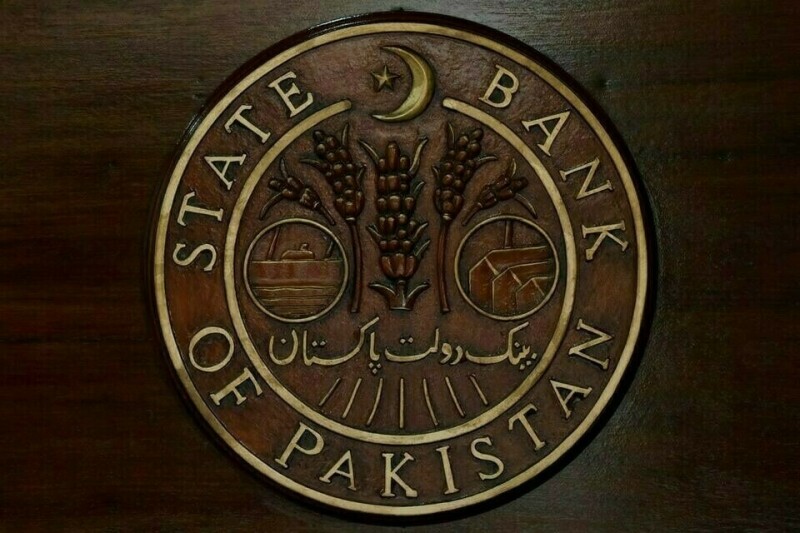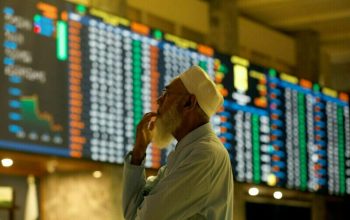The Monetary Policy Committee (MPC) of the State Bank of Pakistan (SBP) unleashed on Thursday its most aggressive cut in the key policy rate since April 2020, reducing it by 200 basis points (bps) to bring it down to 17.5% amid slowing inflation and declining international oil prices.
“At its meeting today, the MPC decided to cut the policy rate by 200bps to 17.5%, effective from September 13, 2024,” it said in the statement.
“Both headline and core inflation fell sharply over the past two months. The pace of this disinflation has somewhat exceeded the MPC’s earlier expectations, mainly due to the delay in the implementation of planned increases in administered energy prices and favourable movement in global oil and food prices.”
This was the SBP’s third successive cut in the interest rate after a 150bps reduction in June and another 100bps decrease at the end of July. However, Thursday’s cut is the strongest in over four years. Back in April 2020 during the pandemic, the SBP had cut the rate by 200bps. At the time, the key interest rate was brought down from 11% to 9%, data shows.
However, the MPC warned that there is still an inherent uncertainty, “which warranted a cautious monetary policy stance”.
“In this regard, the committee underscored the importance of the tight monetary policy stance in driving the sustained decline in inflation over the past year,” it added.
Citing positive developments including decline in oil prices and improvement in FX reserves, the MPC assessed the real interest rate to still be adequately positive “to bring inflation down to the medium-term target of 5-7 percent and help ensure macroeconomic stability”.
“This would be essential to achieve sustainable economic growth over the medium term,” it added.
The MPC observed that the continued ease in inflationary pressures and the unfolding impact of recent policy rate cuts will support the growth prospects in the industry and services sectors.
“On balance, therefore, the real GDP growth outlook remained in line with the MPC’s earlier assessment of 2.5-3.5% for FY25,” it said.
The MPC noted that the global macroeconomic environment has turned favorable amid substantial softening of crude oil prices and relative easing of global financial conditions.
“Going forward, import volumes are expected to increase, in line with the ongoing domestic economic recovery. However, the improvement in the country’s terms of trade, mainly driven by softening crude oil prices, is expected to contain the overall trade deficit in FY25.
“The MPC observed that these factors, along with robust workers’ remittances, are expected to keep the current account deficit within the projected range of 0-1% of GDP in FY25.
“This contained current account deficit, along with the realisation of inflows planned under the IMF programme, will help further strengthen SBP’s foreign exchange reserves,” it said.
Outlook on inflation
The MPC viewed a possibility of FY25 average inflation falling below the earlier forecast range of 11.5 – 13.5%. “However, this assessment is contingent on achieving the targeted fiscal consolidation and timely realisation of planned external inflows,” it said.
Background
Just ahead of the MPC announcement, the Karachi Interbank Offer Rate (KIBOR) had declined across all tenors ranging from 2bps to 32bps.
“The major decrease was seen in 1-week, 2-week and 1-month KIBOR rates, with yields decreasing by 32bps, 22bps and 15bps, respectively,” said Arif Habib Limited (AHL) in a note.
“This reflects the market’s increasing anticipation of a rate cut in the monetary policy.”
In its previous meeting held on July 29, the SBP had reduced the key policy rate by 100 bps.
Worryingly for the central bank, the pace of economic activity in Pakistan has decelerated in the last two years after the government implemented tough reforms under an International Monetary Fund (IMF) bailout in a bid to stabilise a crumbling economy, which was on the verge of default.
However, the phase is not yet over as Islamabad has again inked a new, longer-term bailout with the Washington-based lender, after completing a short-term programme earlier this year.
In July, the IMF and the Pakistani authorities reached a staff level agreement (SLA) for a $7-billion, 37-month loan programme aimed at cementing stability and inclusive growth.
The market is currently awaiting the Executive Board approval. However, Pakistan has not yet been included on the agenda of IMF’s Executive Board calendar meetings scheduled till September 18.
Analysts’ expectations
A majority of market experts had expected the SBP to continue with its easing stance as lower inflation reading boosted sentiment of a third-successive reduction.
Brokerage house Arif Habib Limited (AHL) had anticipated a cut of 150 bps. JS Global, another brokerage house, shared a similar view in its report, saying that “the abating inflation strengthens the MPC’s case for continuing the easing cycle in the September meeting with a third consecutive interest rate cut, this time of 150bps, bringing the policy rate down to 18%.”
Mohammed Sohail, CEO Topline Securities, also expected a rate cut of around 100-200 bps.
Previous MPC meeting
In its previous meeting on July 29, the MPC had cut the key interest rate by 100bps, which was in line with market expectations.
“The MPC observed that the June 2024 inflation was slightly better than anticipated. The MPC also assessed that the inflationary impact of the FY25 budgetary measures was broadly in line with earlier expectations,” the MPC had stated back then.
Since the last MPC in July, several key developments on the economic front have taken place.
The rupee depreciated a marginal 0.01%, while petrol prices increased nearly 0.4%.
Internationally, oil prices have declined significantly since the last MPC and were hovering near $70 per barrel amid lower demand.
Pakistan’s headline inflation clocked in at 9.6% on a year-on-year basis in August 2024, lower than the reading in July 2024 when it stood at 11.1%. The CPI-based inflation reading was back into single digits after a span of three years, showed Pakistan Bureau of Statistics (PBS) data.
In addition, the country’s current account posted a deficit of $162 million in July 2024, an amount that is a massive 78% lower than the deficit of $741 million in the same month of the previous fiscal year.
Foreign exchange reserves held by the SBP increased by $33 million on a weekly basis, clocking in at $9.44 billion as of August 30, showed latest data.
Total liquid foreign reserves held by the country stood at $14.74 billion. Net foreign reserves held by commercial banks stood at $5.30 billion.
Read the full story at the Business Recorder - Latest News website.



